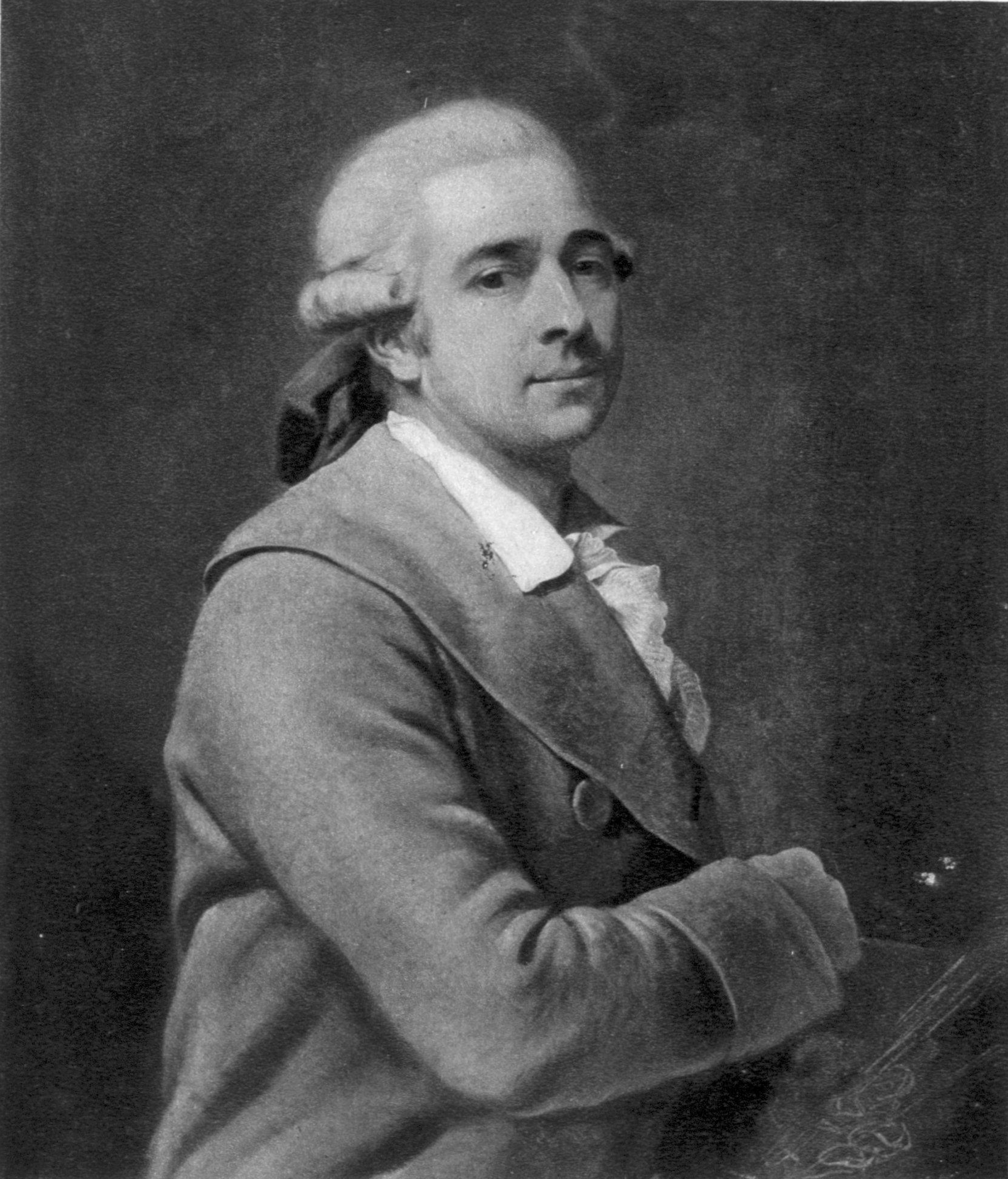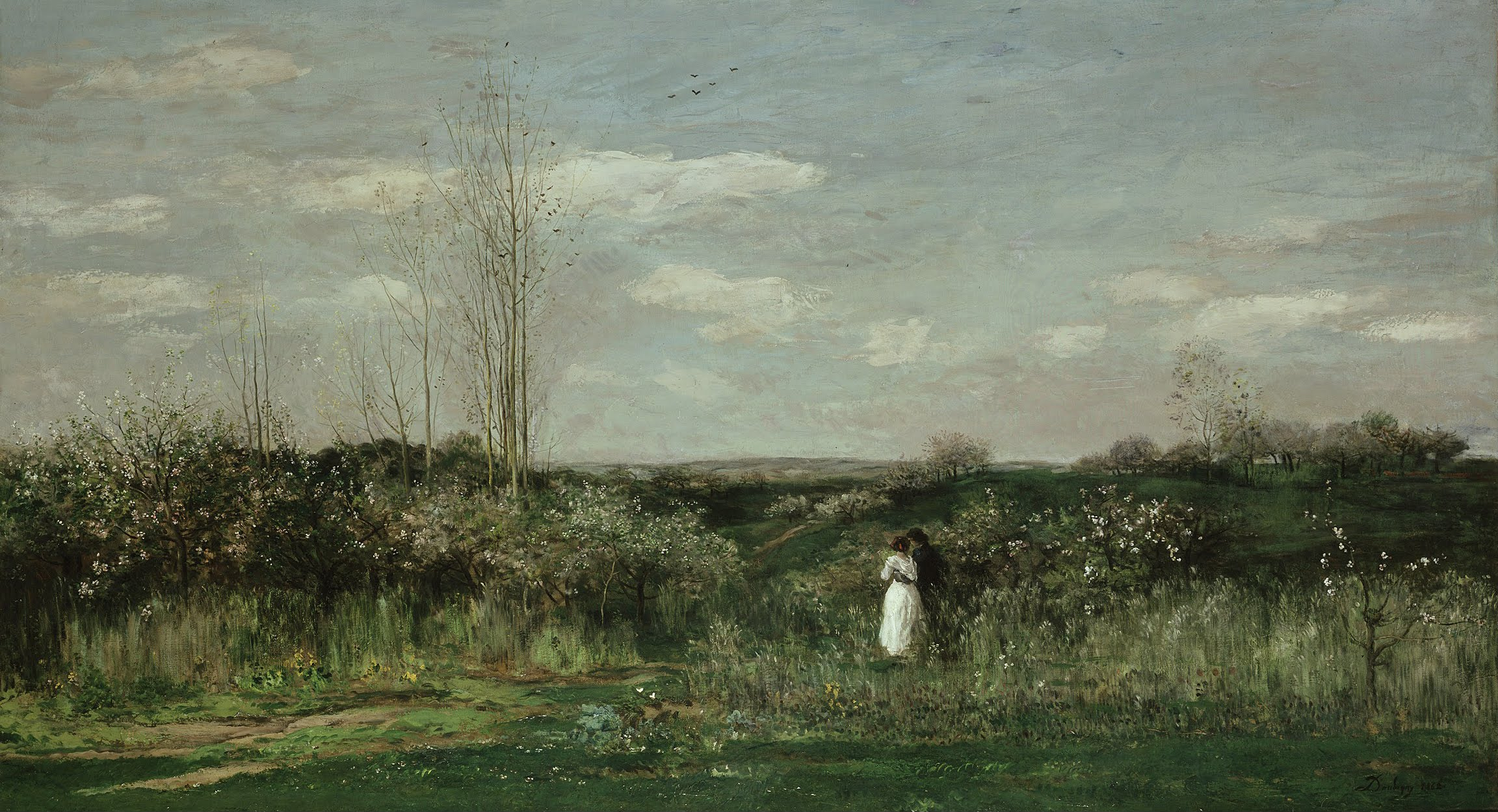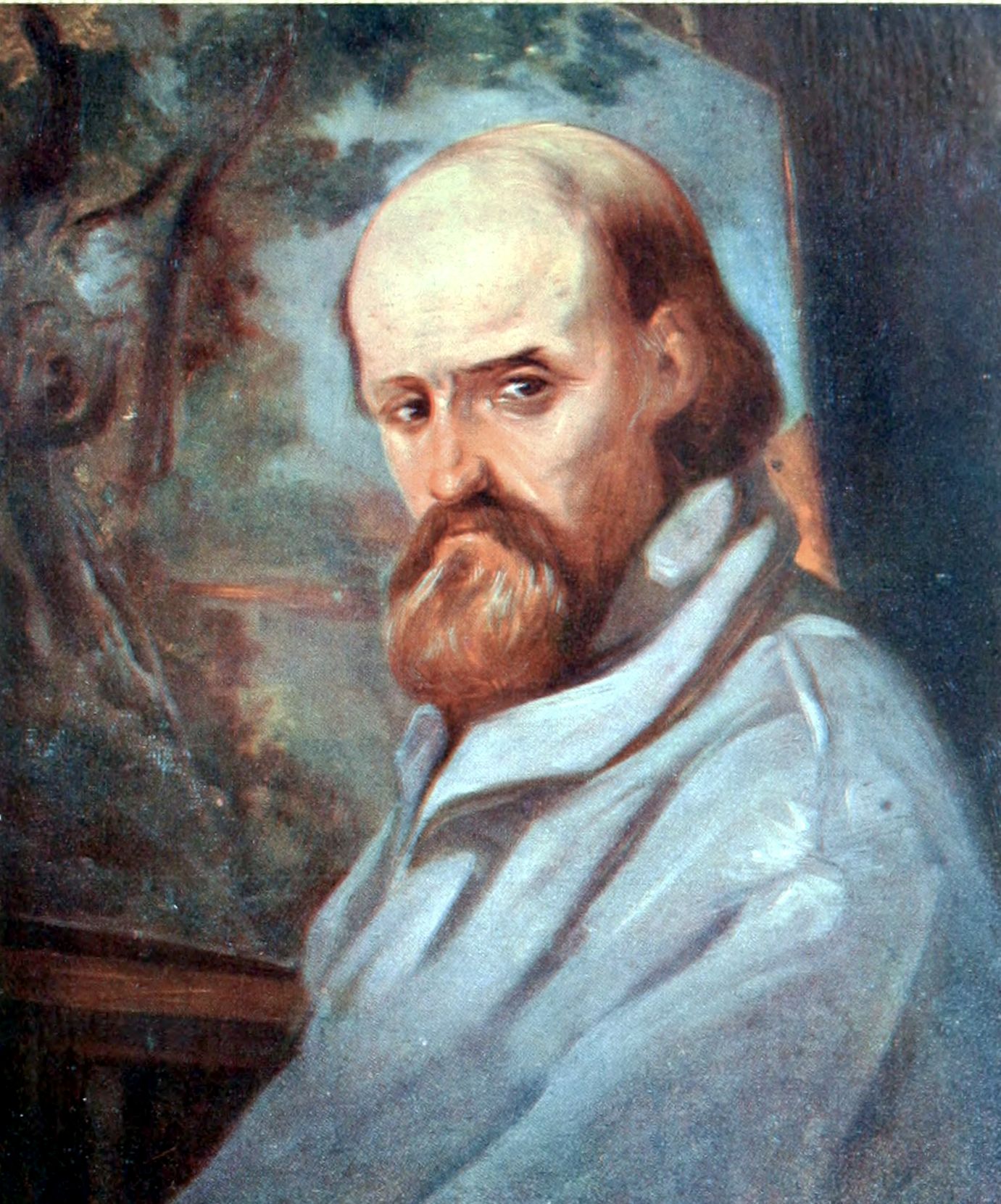|
Roman Campagna
The Roman Campagna () is a low-lying area surrounding Rome in the Lazio region of central Italy, with an area of approximately . It is bordered by the Tolfa and Sabatini mountains to the north, the Alban Hills to the southeast, and the Tyrrhenian Sea to the southwest. The rivers Tiber and Aniene run through the area. History During the Ancient Roman period, it was an important agricultural and residential area, but it was abandoned during the Middle Ages due to malaria and insufficient water supplies for farming needs. The pastoral beauty of the Campagna inspired the painters who flocked into Rome in the 18th and 19th centuries. During that time, the Campagna became the most painted landscape in Europe (see Gallery below). An excursion into the Roman countryside was an essential part of the Grand Tour. The region was reclaimed in the 19th and 20th centuries for use in mixed farming, and new settlements have been built. Starting with the 1950s, the expansion of Rome destroyed ... [...More Info...] [...Related Items...] OR: [Wikipedia] [Google] [Baidu] |
William Stanley Haseltine - Morning LIght, Roman Campagna
William is a masculine given name of Norman French origin.Hanks, Hardcastle and Hodges, ''Oxford Dictionary of First Names'', Oxford University Press, 2nd edition, , p. 276. It became very popular in the English language after the Norman conquest of England in 1066,All Things William"Meaning & Origin of the Name"/ref> and remained so throughout the Middle Ages and into the modern era. It is sometimes abbreviated "Wm." Shortened familiar versions in English include Will, Wills, Willy, Willie, Liam, Bill, and Billy. A common Irish form is Liam. Scottish diminutives include Wull, Willie or Wullie (as in Oor Wullie or the play ''Douglas''). Female forms are Willa, Willemina, Wilma and Wilhelmina. Etymology William is related to the German given name ''Wilhelm''. Both ultimately descend from Proto-Germanic ''*Wiljahelmaz'', with a direct cognate also in the Old Norse name ''Vilhjalmr'' and a West Germanic borrowing into Medieval Latin ''Willelmus''. The Proto-German ... [...More Info...] [...Related Items...] OR: [Wikipedia] [Google] [Baidu] |
Jacques Sablet
Jacques-Henri Sablet (1749–1803) was a French painter, part of a family of artists of Swiss origin. Sablet was born in Lausanne. He studied with his father, the painter and picture dealer Jacob Sablet (1720–1798), before moving to Paris in 1772. There, he and his older brother Jean-François Sablet (1745–1819) studied at the Académie royale de peinture et de sculpture as pupils of Joseph-Marie Vien. Jean-François studied at the Académie in 1768–1773 and Jacques-Henri in 1772–1775. Although their careers did not follow a similar course, the attribution of their works has frequently been confused. When in 1775 Vien was named director of the French Academy in Rome, Sablet accompanied him there. In rome he painted ''Le premier pas de l'enfance'' (''Primi passi'', in Italian) (1789): today that painting belongs to Pedriali Collection (''Collezione Pedriali''), in the City Museum of Forlì (Italy). His ambition was to be a history painter, but facing competition from Jacq ... [...More Info...] [...Related Items...] OR: [Wikipedia] [Google] [Baidu] |
Nicolas Antoine Taunay
Nicolas-Antoine Taunay (10 February 1755 – 20 March 1830) was a French painter known best for his landscapes with scenes from ancient and modern history, mythology, and religion. Early years Nicolas Antoine Taunay was born in Paris, France, in 1755. His father was an enamel painter. Taunay entered the ''École des Beaux-Arts'' in Paris at the age of fifteen and became a pupil of Nicolas-Bernard Lepicié. He later studied in the studios of Nicolas-Guy Brenet and Francesco Giuseppe Casanova. He specialized in painting landscapes. Taunay first exhibited his work at the ''Jeunesse'' and ''Salon de la Correspondance''. In 1784 he was admitted as an assistant at the Royal Academy of Painting and Sculpture. He was now able to exhibit at official shows. Taunay obtained a three-year scholarship to study at the French Academy in Rome in the Palazzo Mancini. While in Italy he met the artist Jacques-Louis David. After returning to France in 1787 Taunay exhibited in the Paris Salon. He ... [...More Info...] [...Related Items...] OR: [Wikipedia] [Google] [Baidu] |
Pierre-Nicolas Brisset
Pierre-Nicolas Brisset (18 August 1810 – 29 March 1890) was a French painter and muralist in the Academic style. He is best known for his mythological, historical and religious scenes, but also painted landscapes and portraits. Biography He was born in Paris. His father was a manufacturer of printing presses. At the age of eighteen, he was apprenticed in the workshop of Louis-Charles-Auguste Couder and later studied with François-Édouard Picot.Biographical notes @ the Galerie la Nouvelles Athènes. During this time, he also studied at the . A trip to Italy in 1835 inspired Brisset to pai ... [...More Info...] [...Related Items...] OR: [Wikipedia] [Google] [Baidu] |
Goethe In The Roman Campagna
''Goethe in the Roman Campagna'' is a painting by Johann Heinrich Wilhelm Tischbein, a German Neoclassical painter, depicting Johann Wolfgang von Goethe when the writer was travelling in Italy. Goethe's book on his travels to Italy from 1786–88, called ''Italian Journey'', was published in 1816–17; the book is based on his diaries. Since 1887, the painting has been in the possession of the Städel Museum in Goethe's hometown Frankfurt. Painting The painting is a full-length portrait began in December 1787 and completed early the following year. Nicholas Boyle''Goethe, the Poet and the Age,'' larendon Press 1991 pp. 444–445. Goethe is gazing out through the autumnal landscape southeast of Rome, with his eyes arguably resting at infinity, though the painter, Johann Tischbein, wrote that Goethe is depicted pondering the fate of man's works.Rudolf M.Bisanz'The Birth of a Myth: Tischbein's Goethe in the Roman Campagna,'Monatshefte , Summer, 1988, Vol. 80, No. 2 (Summer, 1988), p ... [...More Info...] [...Related Items...] OR: [Wikipedia] [Google] [Baidu] |
Johann Heinrich Wilhelm Tischbein
Johann Heinrich Wilhelm Tischbein, known as the ''Goethe Tischbein'' (15 February 1751 in Haina – 26 February 1829 in Eutin), was a German painter from the Tischbein family of artists. Biography Johann Heinrich Wilhelm Tischbein was born on 15 February 1751 in Haina. His father was Johann Conrad, a carpenter. Tischbein began his artistic studies with his uncle, Johann Heinrich Tischbein the Elder (The "Kassel Tischbein"), in 1765, when Johann Heinrich Wilhelm was only 14 years old. Soon after, he began his travels, first working at the studio of his uncle Johann Jacob Tischbein in Hamburg before moving to Bremen in 1771, and then travelling through Holland in 1772 and 1773. Tischbein returned to Kassel in 1773. Between 1773 and 1775 he completed many portrait commissions with his brother Johann Heinrich Tischbein the Younger. In 1777, he established himself as a portrait painter in Berlin, and completed commissions with the help of his younger brother Heinrich Jacob. Johan ... [...More Info...] [...Related Items...] OR: [Wikipedia] [Google] [Baidu] |
Claude Gellée
Claude Lorrain (; born Claude Gellée , called ''le Lorrain'' in French; traditionally just Claude in English; c. 1600 – 23 November 1682) was a French painter, draughtsman and etcher of the Baroque Painting, Baroque era. He spent most of his life in Italy, and is one of the earliest important artists, apart from his contemporaries in Dutch Golden Age painting, to concentrate on landscape painting. His landscapes are usually turned into the hierarchy of genres, more prestigious genre of history paintings by the addition of a few small figures, typically representing a scene from the Bible or classical mythology. By the end of the 1630s he was established as the leading landscapist in Italy, and enjoyed large fees for his work. His landscapes gradually became larger, but with fewer figures, more carefully painted, and produced at a lower rate.Kitson, 6 He was not generally an innovator in landscape painting, except in introducing the sun and streaming sunlight into many ... [...More Info...] [...Related Items...] OR: [Wikipedia] [Google] [Baidu] |
Jervis McEntee
Jervis McEntee (July 14, 1828 – January 27, 1891) was an American painter of the Hudson River School. He is a somewhat lesser-known figure of the 19th-century American art world, but was the close friend and traveling companion of several of the important Hudson River School artists. Aside from his paintings, McEntee's journals are an enduring legacy, documenting the life of a New York painter during and after the Gilded Age. Biography McEntee was born in Rondout, New York on July 14, 1828. Little is known of his childhood. From approximately 1844–1846, he attended the Clinton Liberal Institute in Clinton, New York. He exhibited his first painting as a self-taught artist at the National Academy of Design in New York City in 1850. In the fall of that year he apprenticed with Frederic Edwin Church, who was then regarded as a rising star in the American art world. After leaving Church's studio in 1851, McEntee remained his lifelong friend, though McEntee never approached ... [...More Info...] [...Related Items...] OR: [Wikipedia] [Google] [Baidu] |
Charles-François Daubigny
Charles-François Daubigny ( , , ; 15 February 181719 February 1878) was a French painter, one of the members of the Barbizon school, and is considered an important precursor of impressionism. He was also a prolific printmaker, mostly in etching but also as one of the main artists to use the cliché verre technique. Biography Daubigny was born in Paris, into a family of painters; taught the art by his father, , and his uncle, miniaturist Pierre Daubigny (1793-1858). He was also a pupil of Jean-Victor Bertin, Jacques Raymond Brascassat and Paul Delaroche, from whom he would quickly emancipate himself. In 1838, he set up, at the Rue des Amandiers-Popincourt, a community of artists, a phalanstery, with Adolphe-Victor Geoffroy-Dechaume, Hippolyte Lavoignat, Ernest Meissonnier, Auguste Steinheil, Louis Joseph Trimolet, with whom he already had expressed his interest in subjects drawn directly from daily life and nature. These artists will work, among others, for the publisher L� ... [...More Info...] [...Related Items...] OR: [Wikipedia] [Google] [Baidu] |
Jean Achille Benouville
Jean may refer to: People * Jean (female given name) * Jean (male given name) * Jean (surname) Fictional characters * Jean Grey, a Marvel Comics character * Jean Valjean, fictional character in novel ''Les Misérables'' and its adaptations * Jean Pierre Polnareff, a fictional character from ''JoJo's Bizarre Adventure'' Places * Jean, Nevada, USA; a town * Jean, Oregon, USA Entertainment * Jean (dog), a female collie in silent films * "Jean" (song) (1969), by Rod McKuen, also recorded by Oliver * ''Jean Seberg'' (musical), a 1983 musical by Marvin Hamlisch Other uses * JEAN (programming language) * USS ''Jean'' (ID-1308), American cargo ship c. 1918 * Sternwheeler Jean, a 1938 paddleboat of the Willamette River See also *Jehan * * Gene (other) * Jeanne (other) * Jehanne (other) * Jeans (other) * John (other) John is a common English name and surname: * John (given name) * John (surname) John may also refer to: N ... [...More Info...] [...Related Items...] OR: [Wikipedia] [Google] [Baidu] |
Károly Markó The Elder
Károly Markó, also known as Carlo Marco (25 September 1791, @ the Magyar Életrajzi Lexikonban. Levoča, Lőcse (today Levoča, Slovakia) – 19 November 1860, at the Medici villas, Villa Medici di Lappeggi near Bagno a Ripoli, Italy) was one of the first Hungarian landscape painters. He is often referred to as "The Elder", to distinguish him from his son, Károly Markó the Younger. Biography In the early 1800s, although he was already interested in art, he studied engineering as an apprentice in Pest, Hungary, Pest and Kolozsvár (today Cluj-Napoca, Romania). Markó Károly@ the Magyar Életrajzi Lexikonban. From 1812 to 1818, after mastering his craft, he worked as an ... [...More Info...] [...Related Items...] OR: [Wikipedia] [Google] [Baidu] |
Karel Dujardin
Karel Dujardin (September 27, 1626November 20, 1678) was a Dutch Golden Age painter. Although he did a few portraits and a few history paintings of religious subjects, most of his work is small Italianate landscape scenes with animals and peasants, and other genre scenes. Dujardin spent two extended periods, at the beginning and end of his career, in Italy, and most of his paintings and landscape etchings have an Italian or Italianate setting. Biography Karel Dujardin was a Dutch painter and etcher, born in Amsterdam in 1626. Typical of his landscape paintings is ''Farm Animals in the Shade of a Tree'' (1656; National Gallery, London). He died in Venice in 1678. After supposedly training with Nicolaes Berchem, the young Dujardin went to Italy, and joined the Bentvueghels group of painters in Rome, among whom he was known as , "goat-beard", or ''Bokkebaart''. [Baidu] |




.jpg)





